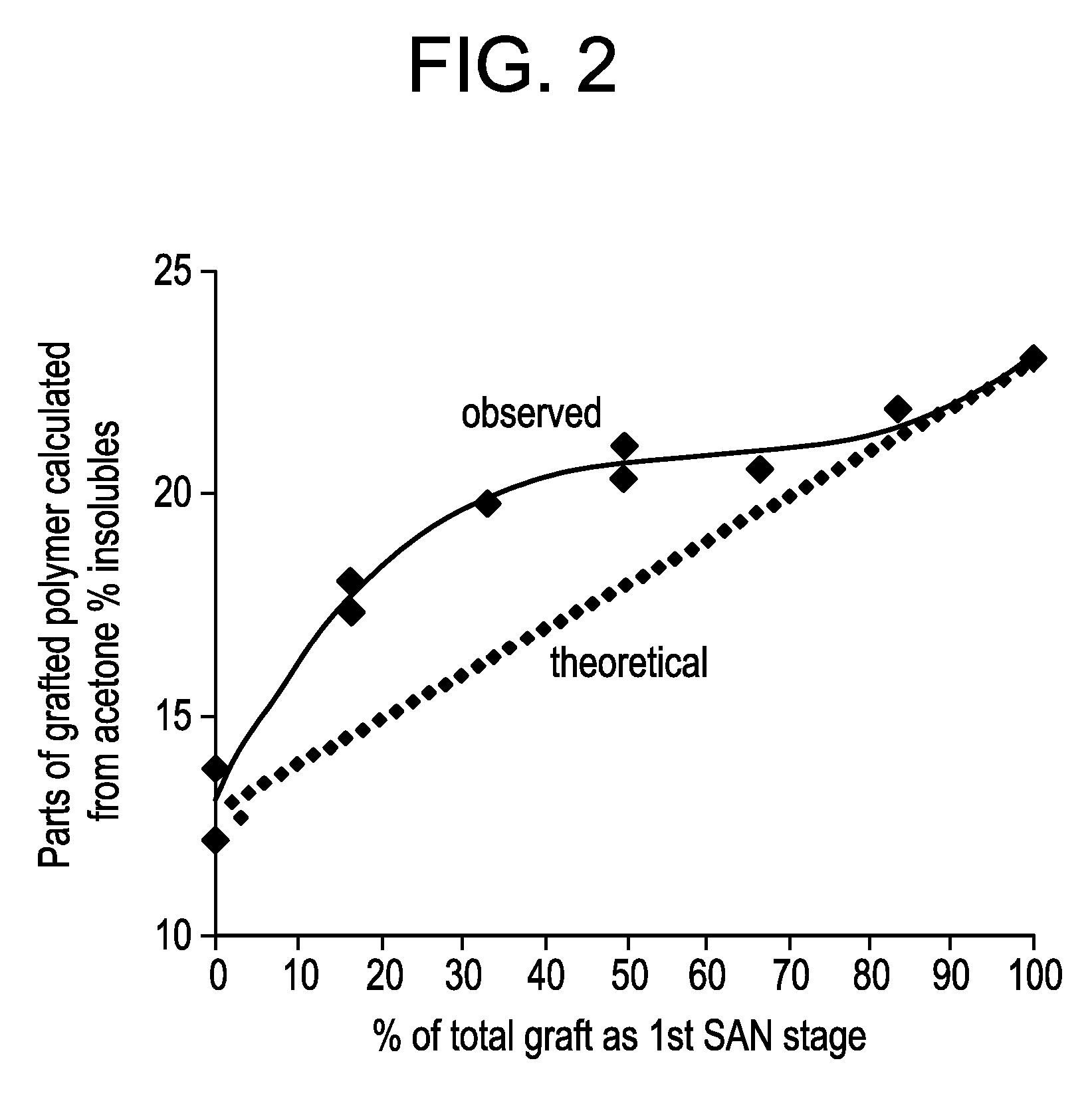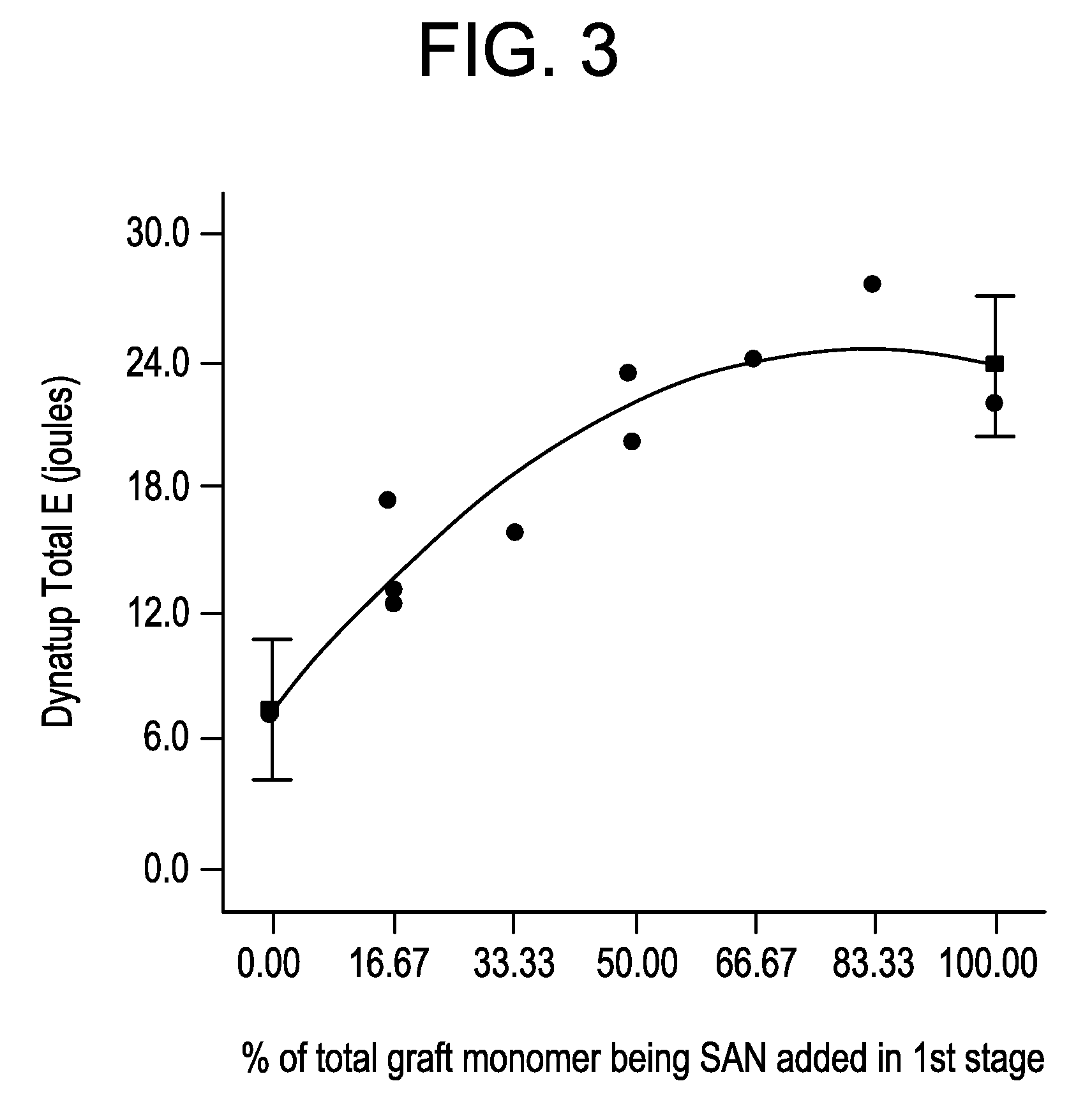Impact-modified compositions and method
a technology of impact modification and composition, which is applied in the direction of synthetic resin layered products, transportation and packaging, chemical instruments and processes, etc., can solve the problems of styrene-acrylonitrile matrix polymers that are significantly less stable to outdoor exposure conditions, hals is consumed at the surface of the article, and the system based on styrene-acrylonitrile including asa tends to show a tendency to yellow and chalk over time, so as to achiev
- Summary
- Abstract
- Description
- Claims
- Application Information
AI Technical Summary
Benefits of technology
Problems solved by technology
Method used
Image
Examples
examples 8-13
[0078] Compositions were prepared comprising 40 phr of a copolymer of 70% alpha-methylstyrene and 30% acrylonitrile; 15 phr of a copolymer of MMA-SAN (40 pbw styrene / 25 pbw acrylonitrile / 35 pbw MMA; prepared by a bulk polymerization process) and 45 phr of a copolymer derived from 2-stage grafting of MMA-SAN to PBA. The PBA employed was a blend of 100 nm mean particle size PBA and 500 nm mean particle size PBA in a 70:30 ratio, respectively. The amounts of MMA-SAN grafted to PBA in each of the 2 stages are shown in Table 6. Each of the compositions also contained 2 parts carbon black and low levels of customary lubricant and stabilizing additives. Table 6 also shows physical properties of molded test parts of the compositions. Viscosities were determined at various shear rates using a Kayeness capillary rheometer under conditions of 260° C. melt temperature. The test parts as molded were subjected to color measurements in the CIE L*a*b* space using a MacBeth 7000 instrument. Values f...
example 14
[0080] The preparation of rubber modified thermoplastic resin was performed under conditions similar to those of Example 6 except that 45 parts of a PBA with 475 nm number average particle size was employed. Also, a dimer fatty acid surfactant was employed and the final product comprising rigid thermoplastic phase and grafted rubber substrate was coagulated with sulfuric acid.
example 15
[0081] The preparation of rubber modified thermoplastic resin was performed under conditions similar to those of Example 6 except that 45 parts of a PBA with 90 nm number average particle size was employed. Also, a dimer fatty acid surfactant was employed and the final product comprising rigid thermoplastic phase and grafted rubber substrate was coagulated with sulfuric acid.
PUM
| Property | Measurement | Unit |
|---|---|---|
| Size distribution | aaaaa | aaaaa |
| Size distribution | aaaaa | aaaaa |
| Percent by mass | aaaaa | aaaaa |
Abstract
Description
Claims
Application Information
 Login to View More
Login to View More - R&D
- Intellectual Property
- Life Sciences
- Materials
- Tech Scout
- Unparalleled Data Quality
- Higher Quality Content
- 60% Fewer Hallucinations
Browse by: Latest US Patents, China's latest patents, Technical Efficacy Thesaurus, Application Domain, Technology Topic, Popular Technical Reports.
© 2025 PatSnap. All rights reserved.Legal|Privacy policy|Modern Slavery Act Transparency Statement|Sitemap|About US| Contact US: help@patsnap.com



